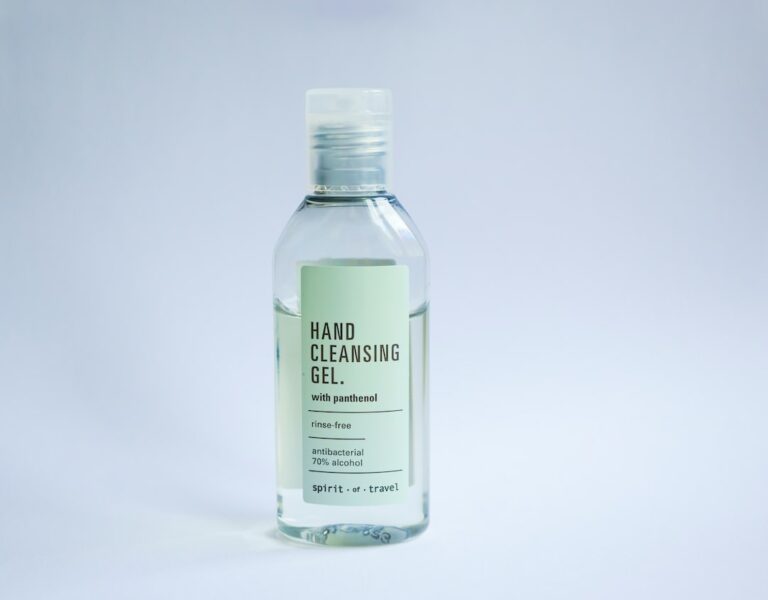Introduction
What are vitamins?
Vitamins are essential nutrients that our bodies need in small amounts to function properly. They play a crucial role in maintaining overall health and well-being. Vitamins are involved in various physiological processes, such as metabolism, immune function, and cell growth. They can be obtained from a balanced diet, but sometimes, taking vitamin supplements can be necessary to meet specific nutritional needs. However, it is important to be aware of potential interactions to avoid between supplements and medication. These interactions can affect the effectiveness of both the supplements and the medication, and may even lead to adverse effects. Therefore, it is always recommended to consult with a healthcare professional before starting any new vitamin regimen, especially if you are taking any medications.
Why do we need vitamins?
Vitamins play a crucial role in maintaining our overall health and well-being. They are essential for various bodily functions, including metabolism, immune system support, and cell growth. One of the key vitamins that our body needs is Vitamin B6. This vitamin offers numerous advantages for our health. It helps in the production of neurotransmitters, which are important for brain function and mood regulation. Vitamin B6 also aids in the metabolism of proteins, carbohydrates, and fats, ensuring that our body can efficiently use these nutrients for energy. Additionally, it supports the immune system, helping to fight off infections and diseases. Overall, the advantages of Vitamin B6 are significant and cannot be overlooked.
Can I take multiple vitamins?
Taking multiple vitamins can be beneficial for overall health and well-being. However, it is important to be cautious about the potential harm caused by overconsumption of vitamin gummies. While vitamins are essential nutrients, excessive intake can lead to adverse effects on the body. It is recommended to consult with a healthcare professional before starting any new vitamin regimen. By understanding the proper dosage and ensuring moderation, individuals can safely incorporate multiple vitamins into their daily routine.
Benefits of Taking Vitamins
Improved overall health
Taking vitamins can greatly improve your overall health. By providing essential nutrients that may be lacking in your diet, vitamins can help support various bodily functions and promote optimal well-being. They can enhance your immune system, boost your energy levels, and improve your mood. Additionally, vitamins can help prevent certain health conditions and support the proper functioning of your organs. Incorporating a daily vitamin regimen into your routine can have long-lasting benefits for your overall health and well-being.
Boosted immune system
A boosted immune system is essential for maintaining good health. By incorporating natural products into your daily routine, you can support your immune system and enhance its ability to fight off infections and diseases. Natural products, such as vitamins and supplements, are rich in antioxidants and other beneficial compounds that can strengthen your immune response. Additionally, these products can provide essential nutrients that your body needs to function optimally. Taking 7 vitamins everyday can be a great way to ensure that you are getting the necessary nutrients to boost your immune system. By choosing natural products, you can take proactive steps towards improving your overall health and well-being.
Increased energy levels
Taking vitamins can lead to increased energy levels, allowing you to tackle your day with vigor and vitality. Whether you’re feeling sluggish or simply want to enhance your overall well-being, incorporating vitamins into your daily routine can provide a natural boost. One important consideration when choosing vitamins is to opt for organic options whenever possible. Organic vitamins are derived from natural sources and are free from synthetic additives and chemicals. By choosing organic vitamins, you can ensure that you’re consuming a high-quality product that supports your energy levels without any unwanted side effects. Incorporating organic vitamins into your daily regimen can help you maintain optimal energy levels and support your overall health and wellness.
Potential Risks and Side Effects
Vitamin toxicity
Vitamin toxicity is a serious concern when it comes to taking supplements. While vitamins are essential for our overall health, consuming excessive amounts of certain vitamins can have harmful effects on the body. It is important to be aware of the recommended daily intake and avoid exceeding the safe limits. When it comes to choosing the right multivitamin, Wirecutter’s recommended inexpensive multivitamins are worth considering. These multivitamins provide a balanced combination of essential nutrients without breaking the bank. By following the recommended dosage and consulting with a healthcare professional, you can ensure that you are getting the necessary vitamins without risking vitamin toxicity.
Interactions with medications
When it comes to taking vitamins, it is important to consider potential interactions with medications. It is always recommended to consult with your doctor before starting any new vitamin regimen, as certain vitamins can interact with medications and affect their effectiveness. This is especially important for individuals who are taking multiple medications or have specific health conditions. Your doctor will be able to provide personalized advice and guidance based on your individual needs and medications. Ensuring that you have open communication with your doctor about your vitamin intake can help ensure your satisfaction with your overall health and well-being.
Digestive issues
Digestive issues can be a common problem for many individuals. Whether it’s occasional discomfort or chronic conditions, finding relief is essential for maintaining overall well-being. One natural medicine that has gained popularity in recent years is the use of vitamins. Many people wonder if they can take 7 vitamins every day to help with their digestive issues. While vitamins can be beneficial for overall health, it’s important to consult with a healthcare professional before starting any new supplement regimen. They can provide personalized advice and guidance based on your specific needs and medical history. Additionally, it’s important to remember that vitamins should not be used as a substitute for a balanced diet and healthy lifestyle. Incorporating a variety of nutrient-rich foods, such as fruits, vegetables, whole grains, and lean proteins, can also support digestive health. By combining the benefits of natural medicine and a holistic approach, individuals can take steps towards improving their digestive issues and achieving optimal well-being.
Recommended Daily Intake
Understanding recommended daily allowances
Understanding recommended daily allowances is essential for maintaining optimal health. It is important to know the appropriate amounts of vitamins and minerals that our bodies need on a daily basis. Alternative medicine is becoming increasingly popular as people seek natural remedies and holistic approaches to healthcare. However, it is crucial to understand that the recommended daily allowances of vitamins and minerals are based on scientific research and are designed to meet the needs of the average person. While alternative medicine may offer additional options for supplementation, it is important to consult with a healthcare professional before making any changes to your vitamin regimen. By understanding the recommended daily allowances and consulting with a healthcare professional, you can make informed decisions about your vitamin intake and ensure that you are meeting your body’s nutritional needs.
Factors to consider when determining intake
When determining intake of vitamins, there are several factors to consider. One important factor is the concept of natural detox. Natural detox refers to the process of removing toxins from the body using natural methods. It is important to understand the role of vitamins in supporting natural detoxification processes. By providing essential nutrients, vitamins can help enhance the body’s ability to eliminate toxins and promote overall health. Therefore, when deciding on the intake of vitamins, it is crucial to consider the potential benefits they offer in terms of natural detoxification.
Consulting with a healthcare professional
Consulting with a healthcare professional is crucial when considering any changes to your vitamin regimen. They can provide personalized advice based on your specific health needs and medical history. It is important to consult with a healthcare professional to ensure that the vitamins you are taking are safe and appropriate for you. They can also help you determine the correct dosage and frequency of taking vitamins. Additionally, a healthcare professional can discuss any potential interactions between your vitamins and any medications you may be taking, including herbal alternatives to Xanax. By consulting with a healthcare professional, you can make informed decisions about your vitamin intake and ensure the best possible outcomes for your health.
Choosing the Right Vitamins
Identifying individual needs
Identifying individual needs is an essential step in determining whether taking 7 vitamins every day is suitable for you. It is important to consider factors such as age, gender, lifestyle, and overall health condition. Additionally, consulting with a healthcare professional can provide valuable insights into your specific vitamin requirements. Stress relief techniques are also crucial to address, as they play a significant role in maintaining overall well-being. By understanding your individual needs and incorporating stress relief techniques into your daily routine, you can make informed decisions about the vitamins you should take.
Reading labels and ingredients
When it comes to reading labels and ingredients, it is important to pay attention to the details. Understanding what is in the vitamins you are taking is crucial for your health. One key ingredient to look out for is rosemary. Known for its antioxidant properties, rosemary has been used for centuries in traditional medicine. Another important aspect to consider is biblical references. Some vitamin manufacturers may include biblical references in their product descriptions, highlighting the historical significance of certain ingredients. By reading labels and ingredients carefully, you can make informed choices about the vitamins you take.
Considering dietary sources
When considering dietary sources, it is important to explore the benefits of including a variety of vitamins and minerals in your daily routine. While it is possible to obtain essential nutrients from a well-balanced diet, some individuals may choose to supplement their intake with vitamins. One popular question is whether it is safe to take 7 vitamins every day. It is important to note that the answer may vary depending on individual needs and health conditions. However, it is always recommended to consult with a healthcare professional before starting any new supplement regimen. Additionally, it is worth mentioning that there are various types of vitamins available in the market, including gold-like expensive herb supplements. These supplements often claim to provide additional health benefits, but it is important to be cautious and do thorough research before incorporating them into your routine. By considering dietary sources and consulting with a healthcare professional, individuals can make informed decisions about their vitamin intake.
FAQ (Frequently Asked Questions)

Can I take vitamins on an empty stomach?
Taking vitamins on an empty stomach is a common concern for many individuals. It is important to understand the effects of taking vitamins without any food in your system. While some vitamins can be taken on an empty stomach without any adverse effects, others may cause discomfort or even be less effective. It is recommended to follow the instructions on the vitamin label or consult with a healthcare professional to determine the best way to take your vitamins. By doing so, you can ensure that you are getting the maximum benefits from your daily vitamin regimen.
What happens if I exceed the recommended dosage?
Exceeding the recommended dosage of vitamins can have negative effects on your health. When it comes to brain health, it is important to be cautious with the intake of vitamins. While certain vitamins, such as B vitamins and omega-3 fatty acids, can support brain health, taking excessive amounts can lead to adverse effects. Additionally, some herbs may interact with certain vitamins, further increasing the risk of negative outcomes. It is always recommended to consult with a healthcare professional before exceeding the recommended dosage of vitamins or incorporating herbs into your daily routine.
Are there any vitamins that should not be taken together?
When it comes to taking vitamins, it is important to consider whether there are any combinations that should be avoided. This is particularly true when it comes to consuming multiple vitamins daily. While taking a multivitamin can provide a range of essential nutrients, it is important to be aware of what occurs when you consume multivitamin daily. Some vitamins can interact with each other, potentially affecting their absorption or effectiveness. It is recommended to consult with a healthcare professional to determine the best combination of vitamins for your specific needs and to ensure that you are not taking any vitamins that may interact negatively with each other or cause adverse effects.









































